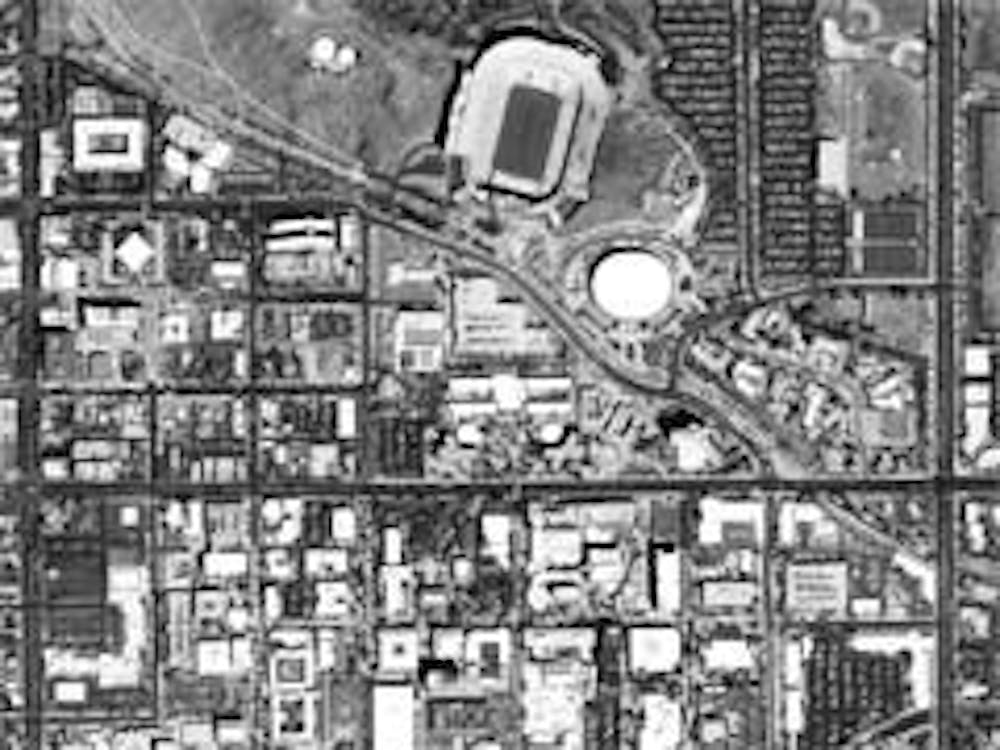The satellite, Ikonos, which helped the U.S. military and national security for years, has recently begun photographing ASU.
Jim Faldi, the assistant director of the ASU Bookstore, said ASU was approached by the satellite distributor, Intec Americas Corporation, approximately four months ago to see if the University was interested in having a satellite photograph taken.
"We had a lot of inquiries about a picture of the entire campus from students, faculty, parents, everyone," Faldi said. "There was no overall picture of the campus [before]."
The satellite image showed a unique view of the University and can serve as a campus map or poster, he added.
The photographs are only available in a 20- by 30-inch poster form.
The cost to ASU for each picture taken ran between $7 and $8 and is now available in the bookstore for $10.95.
"It is something new of ASU," Faldi said. "We have the campus maps, but this picture is unique, it was taken from space and you can pick out the buildings."
The photographs of ASU taken from the satellite were then given over to the Trademark Licensing Coordinator, Fernando Morales, who created the logo alongside the photograph.
"These are better than maps, it's easier to find your way around," Morales said. "It's so precise, you can make out the individual trees.
Ikonos, the satellite responsible for taking ASU's photograph, is the world's first high-resolution commercial imaging satellite.
The first Ikonos satellite was unsuccessfully launched in April 1999, and then fell into the Pacific Ocean, said the President of Intec Americas Corporation, Nick Hubing.
"Then another one was launched on September 24, 1999 and it was successful," he said.
Fernando added that the satellite travels in a polar orbit of 423 miles above the earth and it circles the globe 14 times a day at a rate of 4 miles per second.
"You can see objects on earth as close as one meter away from the satellite," he said.
Hubing added, "With this satellite, you can take a picture of anything,"
Usually the picture-taking process begins with a request for a satellite photograph of an area, and Intec then checks whether the photograph already exists in archives, he said.
"If [the picture doesn't exist], we put in an order for the photograph to be taken," Hubing said.
While satellite photographs are still more of a novelty overseas, they are becoming more common here, he added.
"There are areas in high demand of satellite photographs, like your big cities," Hubing said.
Reach the reporter at nicole.girard@asu.edu.




